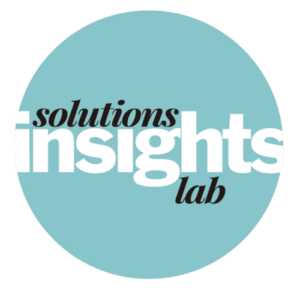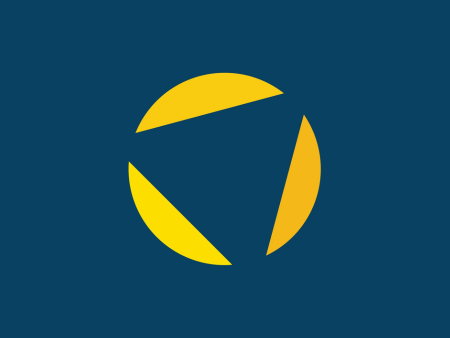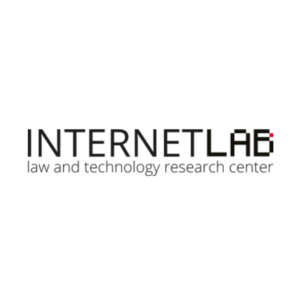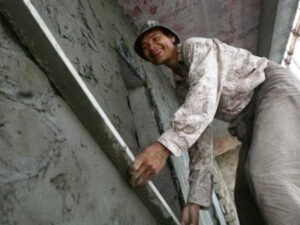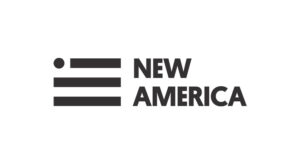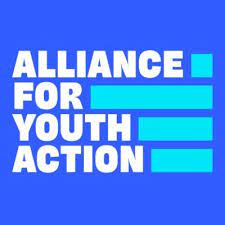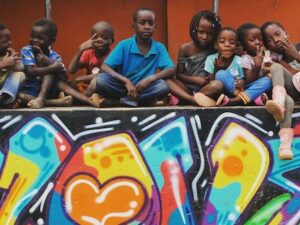Climate Breakthrough builds a philanthropic support system that gives leaders the resources, space, and trust to take risks, break conventions, and pursue ambitious climate goals.
Michaela Koke of Climate Breakthrough spoke with Ambika Samarthya-Howard on July 10, 2025. Click here to read the full conversation with insights highlighted.
Ambika Samarthya-Howard: Can you start by introducing yourself and sharing a bit about Climate Breakthrough?
Michaela Koke: My name is Michaela Koke, and I’m Senior Manager of Award Selection at Climate Breakthrough. We are an award program that focuses on supporting amazing civil society leaders. The Climate Breakthrough Award is the largest climate philanthropy program for individuals. We provide visionary social change leaders with $4 million in multiyear, flexible, non-directive funding along with other support to develop, launch, and scale their boldest new initiatives with breakthrough potential to address the climate crisis.
Our philanthropic program is designed to overcome the common constraints of traditional grantmaking that often stifle breakthrough thinking. It blends elements from institutions known for innovation, like DARPA and ARPA-E, with the entrepreneurship element of venture capital. Perhaps one of the most unique part of our program is that we fund individuals, rather than established organizations, to turn their idea into reality.
I’ve been with Climate Breakthrough since 2019, and I’ve been leading the selection process for the program since 2020. For selection, we have an invite-only process. I work with partners and scouts around the world to source potential candidates. We focus on leaders who have a track record of founding something new, or creating a new organization, campaign, or movement. There are many different ways that a track record can be measured during our process. The other traits that we look for in our awardees when we select them are the ability to work well with others in this space, a highly strategic mindset, and very ambitious plans.
Climate Breakthrough comes in to support leaders at a moment when someone either want to launch something new, or their current work is doing amazing things, but they have a bigger vision than what they have been doing. We call that the scaling track. The award can be used for either a new project or for implementing a project at a new scale. During the process, candidates go through a series of reference checks and interviews to see if their idea is a fit for Climate Breakthrough, and if they themselves are a fit for our profile.
If they’re selected, the award is provided in two parts. There’s a strategy development period, which allows someone to either develop the idea they’ve given us, or to look at something completely new. Sometimes their ideas change significantly throughout this period, which is a crucial part of Climate Breakthroughs’ philosophy. If someone is not at a moment where they can take advantage of the strategy development period, it’s usually not a great fit for us to select them that year.
The remainder of the award is provided over three years. It’s a $4 million award, with $3.5 million given in grant funding over those four years, and $500,000 given for wraparound support. The wraparound support includes impact and learning, measurement, evaluation support, fundraising support, communications, and anything else the awardee needs to unleash their breakthrough. It could be coaching, hiring consultants if they need recruiting or facilitation, or organizational development support. The cost of those support services all comes out of the $500,000 over four years.
Ambika Samarthya-Howard: Climate Breakthrough is funding individuals, but I still consider you a systems change organization. How do you see the individuals you fund in respect to the system and the organization?
Michaela Koke: So, although we fund individuals, we absolutely see ourselves fundamentally as a systems change organization. We focus on individuals because we believe the strongest predictor of an initiative’s success is who leads it. The right person, someone with vision, courage, and a deep understanding of the system they’re trying to shift, can unlock bold, transformative change with the right and robust support.
Our award is different in that we think of it as [a grant] going to an organization, under the direction of an individual. Both the project and the organization where the project is housed are important in terms of the system and how they want to influence it. Our focus is exclusively on large-scale policy, economic, and social transformation. In fact, many of the initiatives pursued by Climate Breakthrough Awardees don’t directly reduce emissions. Instead, they aim to shift culture, reform policy, or build movements that are essential to delivering impact at scale.
Those [strategies] feel necessary to create a systems change element that is big enough to hit the scale of what we’re looking for. We’re looking for people who have proven that they know how to work within a system, and who can support the system, even if they are the visionary behind this particular idea. We look for people who can cultivate the relationships necessary to make the breakthrough happen. They’re not going to be able to do it by themselves. Thus, during the process, we look for projects that are hoping to do transformational systems change.
So while we invest in individuals, what we’re really investing in is systems change that is driven by the kind of leadership that can see, shape, and seize the opportunity for transformation.
Ambika Samarthya-Howard: Do you feel that your model of empowering leaders to enable better systems and create positive change and growth is specifically important or relevant to climate, or do you think it would be a great model for health, or gender?
Michaela Koke: My background has always been in climate, so my first thought is yes, climate should do this. I wish there were a Climate Breakthrough equivalent for some of these other areas that are really hard to tackle. In some spaces, like health or social justice movements, there are examples that our awardees can pull from to support their own work and thinking. Right now, I think climate needs this the most, but there are lots of other areas that I think could benefit from a similar model.
Ambika Samarthya-Howard: Can you give an example of something you’ve funded where the work has surprised you, and is something the individual wouldn’t have been necessarily able to do with a traditional funding model? I’d love to hear an example of someone who works with forest communities and Indigenous people specifically, if possible.
Michaela Koke: We have so many amazing awardees. The ones who have started something new are the best example of this because we fund them without a real, concrete idea of what they can do. We give them space to do whatever they want, within bounds, and within the conversations we’ve had. There are quite a few examples of folks who work with forest communities and Indigenous people.
Nicole Rycroft leads Canopy, an organization that works to transform unsustainable supply chains in the pulp and paper industry to protect forests, which are vital carbon sinks. When we met and selected her for the program in 2020, she was focused on addressing the bottleneck of low-carbon alternatives to forest products. There was strong interest from companies, and a big value Canopy adds is that they have these strong relationships with major brands like H&M. But the infrastructure to deliver those materials at scale didn’t yet exist.
Nicole’s big project with Climate Breakthrough was to create an investment ecosystem to unlock funding for new plants and scale up what she calls Next-Gen solutions more quickly, so they could reach the scale of demand and hopefully limit deforestation in high-value ecosystems. She recently received $60 million in funding from the Audacious Project for this work.
Another awardee working in forest conservation is Arief Rabik from Indonesia. He was selected in 2019, already starting a model of the bamboo village, where everything is done within the community, from growing the bamboo to processing the bamboo. It is a women-led, community-led model in which the community can get a higher value for the bamboo because they’re processing it right there. It’s basically using bamboo to restore land and, at the same time, revitalize local communities.
When we approached him, he wanted to scale up in Indonesia, and then globally. During his work with Climate Breakthrough, the pandemic hit. His project is a good example of how, when you have unforeseen circumstances, you need a funder that’s going to be highly flexible. We’ve supported Arief in completely pivoting his strategy under environmental and political changes. We can do that because we are geared toward supporting individual leaders. Now, Arief has a lot of bamboo villages, and he’s taking the work internationally, which is what he originally wanted to do with Climate Breakthrough.
Ambika Samarthya-Howard: I’m curious to hear your thoughts on the value of local in terms of systems change. In terms of systems mapping, is local as important as scale? Is coalition building as important as what’s happening in one place? How do you see them connected?
Michaela Koke: I think the local work is probably the most important work. If something is not making actual change on the ground, then it’s not going to make the impact that you want to see. For Climate Breakthrough, in terms of supporting huge, high-level projects through which we focus on the different levels and drivers of systems change, the people we select are already oriented that way. Their strategies have to be big enough to hit our threshold, which is huge- we end up thinking about half a gigaton annually after 10 years of launch. There are a lot of projects that don’t fit into what we do, even if they’re headed by amazing thinkers and strategists who would be a solid fit.
If there’s a strategy that’s working at the international level, or at the regional level, without being able to connect to the local level, it’s not going to have the impact that’s desired. Impact requires an understanding of what’s happening, or communication with what’s happening. If you make policy decisions in a vacuum, it will likely backfire.
Where this comes in for Climate Breakthrough is that we select people who have amazing connections with small organizations. We’ve done that many times. Our team, which is based in India, is a really good example. Their whole model is based on supporting their network and supporting grassroots organizations on the ground. There’s also Jane Klebb in the US. Her project is creating a new economic model for renewable energy in the US and rural areas, and her stakeholders are local people on the ground. They’re farmers, ranchers, and tribes.
That’s where we think about systems change. These system orchestrators and systems thinkers are crucially important. However, they must be connecting their thinking to the work on the ground.
Ambika Samarthya-Howard: How do you connect communities and people working with Indigenous for Indigenous land rights to people working on the economic end, making products and finding large-scale supply chains? As a climate expert, but also in terms of your grantees, what are you seeing that bridges those two?
Michaela Koke: Connecting the land rights and economic models is super complicated. Galina Angarova with SIRGE Coalition and Domingo Peas, an Indigenous leader from Sacred Headwaters Alliance, are thinking about this issue, and there is some work happening around that in the US, with tribes in Alaska.
In these cases, it’s about developing a new economic model, a new economic way of supporting their communities because the current economic model doesn’t serve them. From a systems change point of view, those types of pilots and proofs of concept for new economic systems are super important.
We haven’t funded anything like that yet because often, I feel like we need a little bit more than just a pilot or a proof of concept. There has to be a scaling plan for us to be involved. But we’ve had a lot of interesting candidates who have been working on this. The initiatives to connect land-based and Indigenous communities to pots of money have been extremely challenging because you’re working within an existing system that doesn’t value [these ideas].
Ambika Samarthya-Howard: We worked on a project with Rockefeller around thinking about the economy in a way that does not center GDP, but that centers sustainability of planet and people. We came to realize there is no sector doing this, and there doesn’t seem to be much consensus on what a new economic model looks like. Do you feel like Domingo’s and Galina’s models offer more concrete or realistic possibilities?
Michaela Koke: Sacred Headwaters is a group of different communities that have chosen Domingo to be the president. They are protecting a specific area, so they are working with all of the people who are relevant to that area. I feel like that’s super replicable, but it takes a long time because a lot of consensus-building has to happen and plans have to get made. Right now, I think they’re trying to find investment, so they’re working with philanthropy. I’m sure there has to be some government buy-in.
All these things are very complicated. I think using geography to protect and create these new models is a much more interesting approach. That’s one piece of Domingo’s work that’s most interesting and super replicable.
Ambika Samarthya-Howard: Can you tell me more about what that looks like?
Michaela Koke: Sacred Headwaters is protecting the headwaters of a river that flows into the Amazon, and the tribes in California are a good example in their focus. They’ve gotten together and focused on protecting the rivers and undamming the rivers. That was in partnership with the government and with the non-tribal communities, as undamming the river and bringing the salmon back is also an economic endeavor. They’re working with geographic features. I don’t know anybody else working on that.
Ambika Samarthya-Howard: We’ve also found that solutions have to be place-based. Different places in the US, in Brazil, in Europe, can figure it out within their own ecosystem and cultures, but you can’t just create a global economy for it.
Michaela Koke: I agree.
Ambika Samarthya-Howard: A lot of the projects you fund are relatively new, so there’s a lot of risk attached. How do you hold people accountable? Do you think you have to fund risky projects because climate is in such bad shape?
Michaela Koke: There’s an inherent risk to the projects because they’re new. We mitigate our risk first through our very rigorous selection process, by both understanding who the person is and doing a ton of reference checks. By the time we select someone, we will have done at least 15, usually closer to 20, reference checks with all different kinds of people. We ask for a handful at the beginning, and then we find more through the references that we’ve done or through additional due diligence. We usually get a good picture of who this person is, whether they can execute their idea, and whether people want to work with them. The risk is mitigated at the beginning to an extent when we choose the person.
We also do due diligence on their idea. When they submit an idea, we do an expert review, and we also ask other people to weigh in on the strategy panels. We dig deep into the questions of, How is the work going to go? How are you going to think through this work in the strategy development phase? When we select someone, even if we don’t know that much about how their project is going to shake out, we’re very confident that they can do it; they can figure it out.
The other ways we mitigate risk are offering the strategy development period and the wraparound support to accompany it. We’re trying to make sure that these both create a gut check on their strategy and that the awardees have the resources they need to pull it off.
Ambika Samarthya-Howard: Do you feel like this is a space that needs more risky investment and needs more people and funders willing to invest in something even if they’re not sure if or how it’s going to work?
Michaela Koke: Yes, definitely. If you think about Drive Electric, for example, or even US Beyond Coal Work – hundreds of millions of dollars were put into these very successful efforts by philanthropy. They funded it fully and steadily. They did the work, and now they’re seeing a lot of success. EVs [electric vehicles] have been on track, even if there’s some backsliding right now. Coal plants are closing in the US. In those cases, philanthropy did the right thing. They went all in on a very big idea.
We need a lot of new, exciting ideas to come in and push the field in a new direction. That’s talking from the point of view of philanthropy. I think with climate in particular, it’s tough because it’s working within the systems of power. It’s not that we don’t have the solutions we need; it’s that we’re trying to move entrenched actors, and I think you need a lot of new ideas in that case. Then, there are some new areas where we don’t have that many solutions. We need new projects, like in aviation, or petrochemicals, or those types of things.
We were talking about forests and communities, of which a great example is land rights and land tenure. There was a bit of a movement towards that [in philanthropy], but I haven’t heard a lot about it in the last couple of years. There’s been some good news, but there hasn’t been widespread movement towards those areas.
Ambika Samarthya-Howard: What are you seeing that is different in the US or Europe versus other countries? Are you seeing better reception to domestic versus global work? Do you feel like the systems in which the climate actors work in the Global North are different than those in the Global South? If so, do you think it’s reason-specific?
Michaela Koke: Philanthropy goes through trends. The trend I’m seeing right now is to go back to national work. A lot of the strategies that philanthropies have around are to focus on a bio region, like the Amazon or the Congo Basin. Unless they’re funding a big re-granter or the Forest People Climate or something like that.
The other trend that I’m seeing is that to be more strategic, philanthropy is focusing on specific countries, and then they might have specific issue areas within the country they’re focusing on. I’m seeing a lot more of that, and I think it’s too narrow of a focus. Philanthropy wants to make an impact in one specific area, but that really closes the door for any cross-cutting intersectional work.
Ambika Samarthya-Howard: When you fund a new idea, like EV for example, do you think it is generally adopted more easily when it’s domestic, or in a Global North country? When new ideas start in places in the Amazon or Indonesia, is it easier or harder for those systems to adopt the innovation?
Michaela Koke: The solution needs to be super place-based. When you think about EVs, an EV strategy in the Global North, like in Europe or the US, is not going to work in the Amazon or the Pacific Islands. In both of those places, lightweight electric vehicles or even electric boats would be more practical. Then, you would want to fund a strategy where someone from that place is excited to implement that strategy because they know the context, and they know how people are going to adopt it.
Ambika Samarthya-Howard: Do you find your grantees in Indonesia and Brazil able to get their innovative ideas through the system more easily than your grantees in the US?
Michaela Koke: Yes, in some ways. It’s so dependent on the person and what their connections are, but in smaller countries in particular, it can be easier to know the right people and to have those relationships. Sometimes our awardees are past negotiators, and they already have those relationships. It’s often helpful to be in a smaller country rather than a larger country. It’s definitely challenging in the US.
Ambika Samarthya-Howard: What do you see happening next in the space? Where you would like to see funders fund in the future, or where would you give a magic wand?
Michaela Koke: I don’t think funders should abandon their strategic priorities, but I do think they should have more space to be flexible. I’m not even talking about how people are funding, although everyone agrees the field should do more multi-year, general operating support grants. I think we need more space to fund work that doesn’t fit neatly into existing categories. Projects that cross boundaries, sit between silos, or span multiple issue areas. That’s especially true in climate, where the solutions we need next are interdisciplinary. Funders should prioritize transformative work over incremental efforts. That means supporting initiatives that may be hard to quantify in quarterly or even annual reports, or that don’t follow a straight path. The situations on the ground are dynamic and non-linear. Our funding approaches need to reflect that reality. It’s not going to look like traditional climate work. It’s going to look like a lot of different things, it’s going to be directly related to how we work on climate, and it’s going to be really hard to fund.
We can see this in Indigenous communities where work on climate is work around every single aspect of supporting the community and the society. I think that we’re going to see more and more situations like that. The funders of forest community work are probably more flexible, but I think philanthropy in general needs to be a little more open to funding these hard-to-fund projects. I only call them hard to fund because they don’t fit neatly into a specific climate bucket, like climate finance in Europe, or whatever it might be.
There’s incredible climate work happening. There are incredible thinkers and new ideas all the time.
Ambika Samarthya-Howard: Thank you so much for your time and your insights.
Click here to read the full conversation with insights highlighted.
Ambika Samarthya-Howard (she/her) is the Solutions Journalism Network’s Chief Innovation Officer: She leads on innovation and technology, leverages communication platforms for the network strategy and creates cool content. She has an MFA from Columbia’s Film School and has been creating, teaching and writing at the intersection of storytelling and social good for two decades. She has produced content for Current TV, UNICEF, Havas, Praekelt.org, UNICEF, UNFPA, Save the Children, FCDO, Global Integrity and Prism.
* This interview has been edited and condensed.
To hear more from Climate Breakthrough’s Awardees, check out interviews with Gita Syahrani (Koalisi Ekonomi Membumi), Isabel Cavelier (Mundo Común), and Nicole Rycroft (Canopy).
